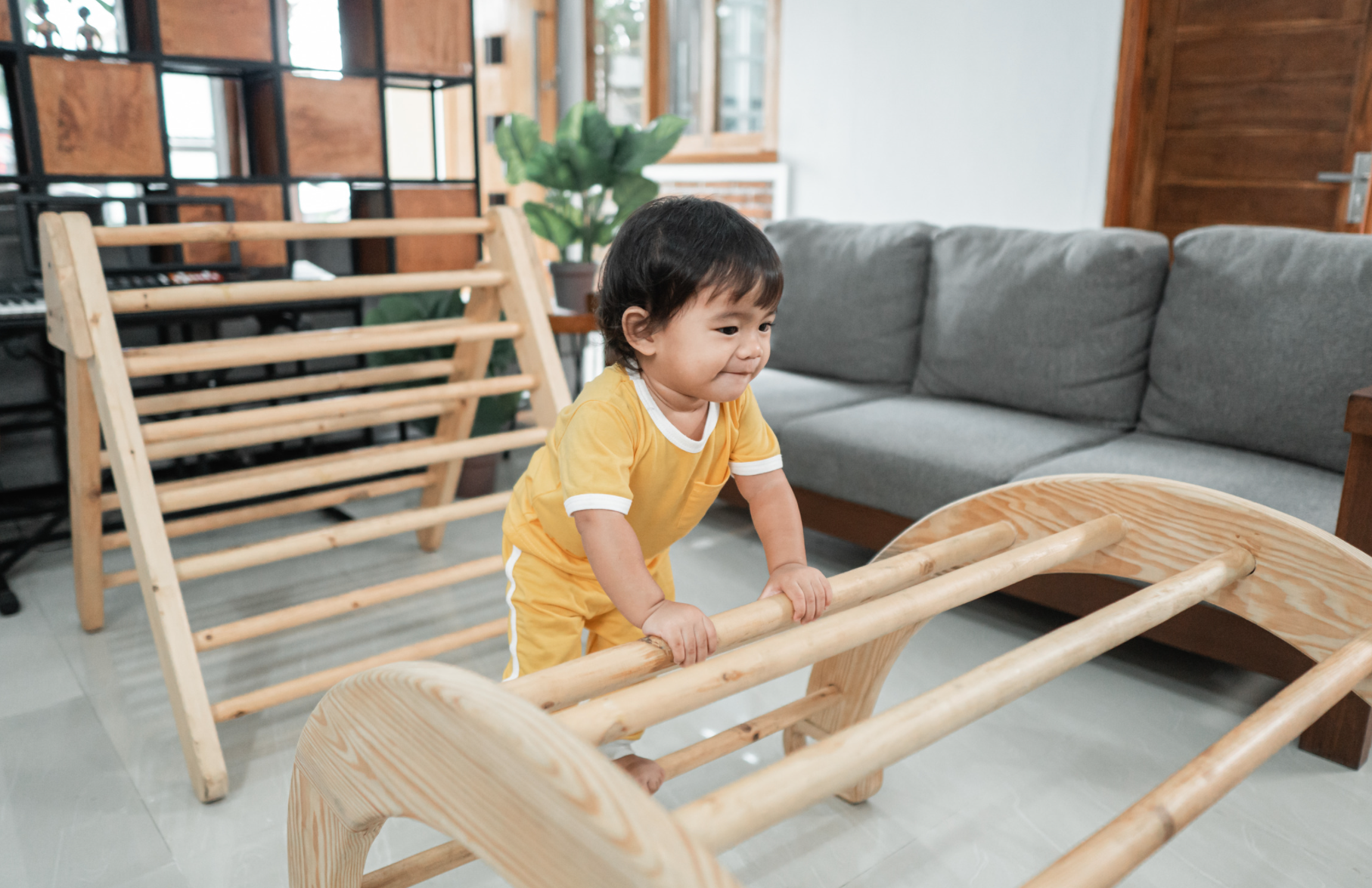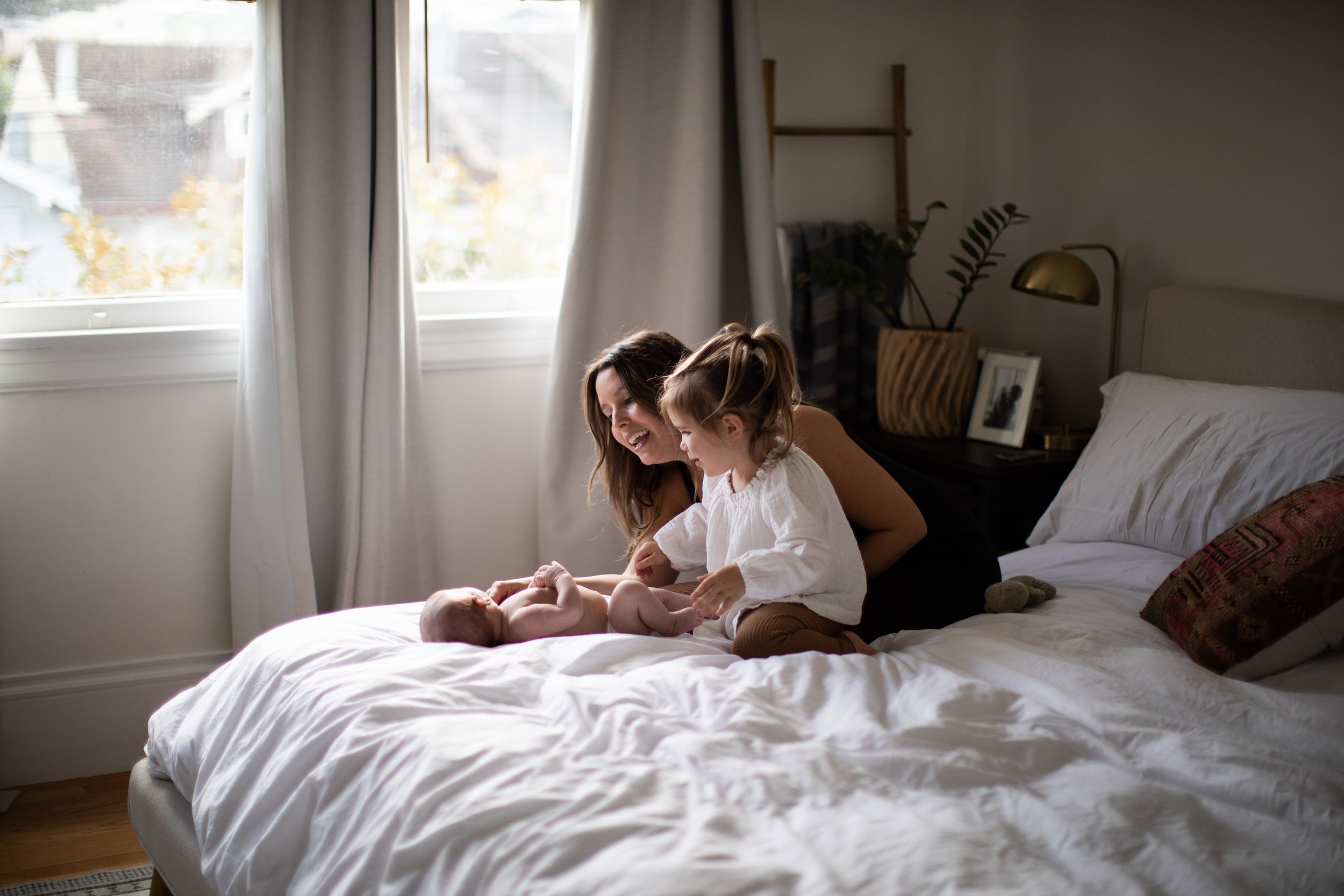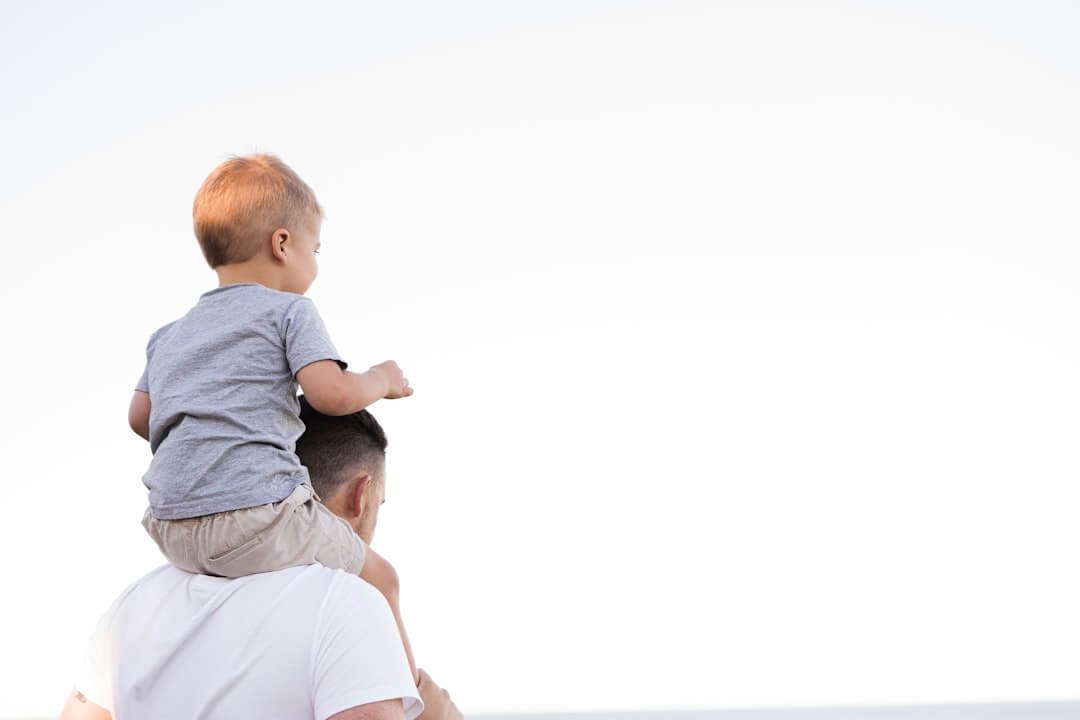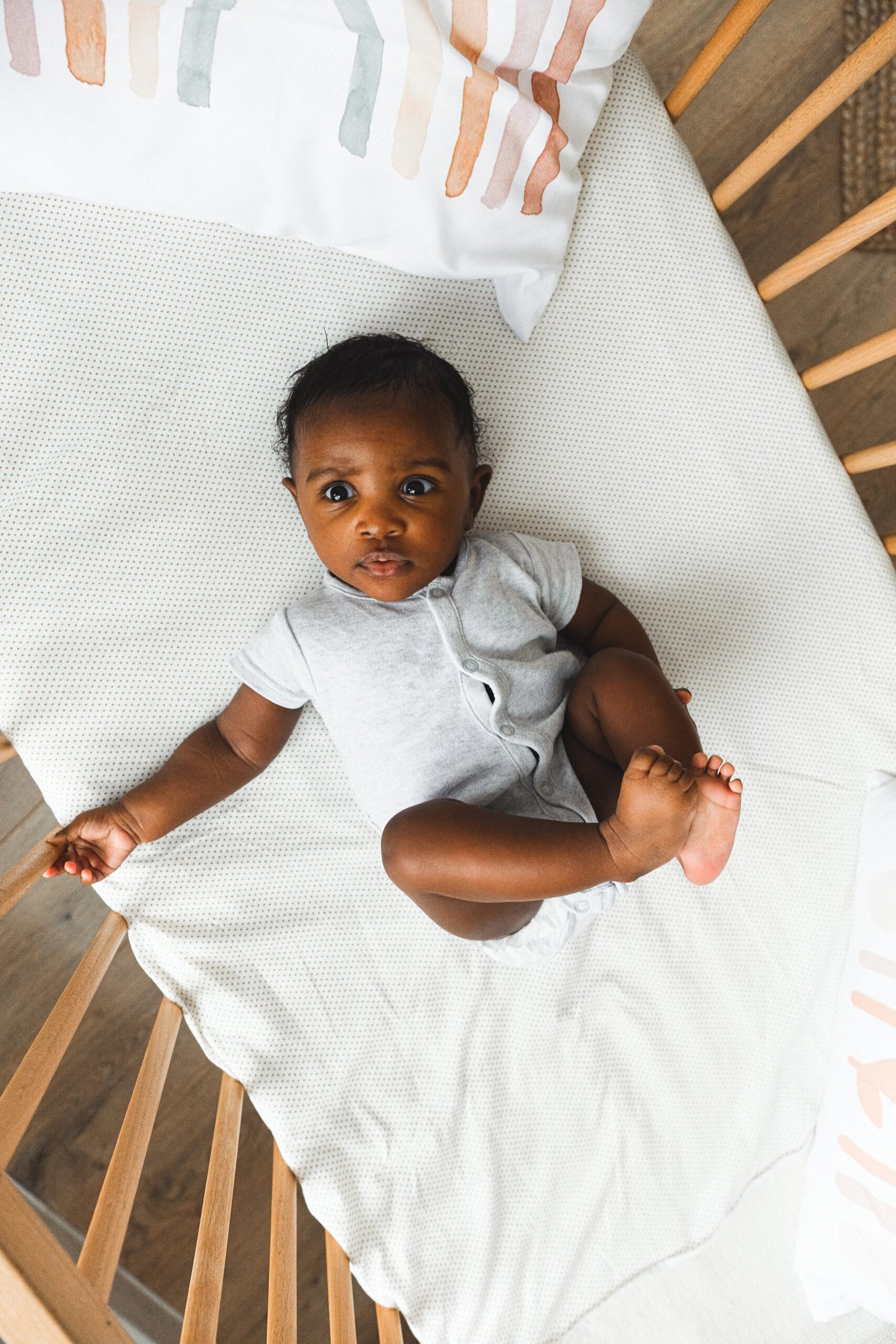I'm Rachael
Mom of 3 & Baby Sleep Expert with Big Sis Energy
& I’VE DONE ALL THE RESEARCH FOR YOU ALREADY.
Better sleep for the entire family
BROWSE COURSES
hey!
Are Pikler Triangles Worth It?
A Professional and Personal Review of the Pikler Triangle by Hannah Thomas

If you follow a lot of on trend Instagram accounts then it’s hard to have not stumbled across the Pikler Triangle. It’s neutral colors fit stylishly into many a playroom but are these climbing frames really worth the hype and the price tag?
As an early years consultant I am not coming to this review as a neutral. I am very partial to the neutral tones of Montessori, the minimalism of Scandinavian parenting and I find great joy in beautiful looking classrooms and playrooms. However, having purchased a Pikler Triangle for my daughter a few months before her first birthday I am able to give a personal and professional review of this apparatus. The original concept of the triangle was developed by the Hungarian Paediatrician Dr Emmi Pikler over one hundred years ago. Pikler was a pioneer in early childhood education and respectful care giving. Dr Pikler championed a naturally paced approach to motor development, free child led movement and uninterrupted play. Pikler’s approach in theory sounds truly idyllic but in reality is actually quite hard to maintain especially if you have a spirited baby who likes a lot of attention! I am constantly having to work as a parent to slow down my speed of intervention and interruption in my toddlers musings. We currently live in a mile a minute society yet the inner wirings of our brains have not had this upgrade and holistic baby and toddler development needs slower exploration opportunities.
My daughter has thrived with this piece of apparatus in our house and I have found immense pleasure in watching her gain creativity, confidence, self-esteem, resilience and determination. Watching her learn to climb before she could even stand was mesmerizing and last month when she learnt to adjust her hands to climb over the top of the triangle, I thought my heart might actually burst with delight at both her achievement but also her self pride. She is now twenty months old and today has pushed her Pikler Triangle alongside the sofa to create her own obstacle course. This was completely child led and although it made my partner a little anxious, we tried to leave her to find her own limits. Curiosity is the breeding ground for confidence and the Pikler Triangle has provided ample opportunity for curiosity. However, just as adults don’t function in isolation neither do toddlers and the more sociably natured they are the more they will want you to join in and share in their challenges and delight. My daughter asked me to climb over the triangle non stop for a few weeks as she locked eyes on my hand movements at the top. This therefore wasn’t truly child led or independent but it was led by my daughter and in-line with how she has demonstrated she likes to learn. For me striking this balance has been a delicate process of unlearning my ingrained habits. The Pikler Triangle has not only been beneficial for her development but also for my own as a mother and my ability to lean into uncomfortable edges. I now view myself as her spot and delight in her delight but hold my tongue with advice (very hard) and suggested extensions to her play (equally hard). It’s also been a great learning tool for my partner in sitting with the discomfort of risky play and learning to trust our daughters own intuition and discovery of boundaries without the need to say be careful constantly.
Personal anecdotes aside, as an early years professional the versatility of this piece of apparatus is astonishing. Holistic development and open ended opportunities are the ideal aim for any item, big or small, inexpensive or dear, that we provide for young children and the Pikler Triangle provides this in abundance. In a non-exhaustive list the Pikler Triangle enhances gross motor development, increases spatial awareness, develops motor planning skills (steps needed to achieve goal), stimulates proprioceptive learning (awareness of physical body) and promotes opportunities for the development of balance (vestibular stimulation). It acts as a catalyst for imaginative play, increases self esteem, self confidence and self pride and allows a controlled environment for risky play to navigate the dance between failure and resilience.
These benefits are not capped to any age or stage of development and it is this element that makes it a truly worthwhile purchase. I have recently watched my niece set the self directed task of climbing up, over and down the ramp without using her hands to aid her. She’s five and this task took several attempts, several failures and then a successful go. I’m not sure it’s even possible to list all the skills and development this activity will have covered as some of those inner skills were so uniquely personal to her. Yet as an observer I saw the determination, the search for courage as she wobbled handsfree at the top, the motivation to succeed, the big breaths as she failed, the eye roll as caregivers told her to be careful and then the choice of self belief that she would succeed.
However, I do think that that does lead to perhaps one of the only negative sides of the Pikler Triangle. It was designed for the purpose of independent movement by a pioneer of early childhood development and therefore in order for it to be fully utilized by a young child they need to be given full reign and watched over by a caregiver who understands the theory behind this approach. If a child is helped to climb up and over each time they use it, it becomes boring and their natural curiosity towards self development is stifled which in turn leads to it becoming an unused item and a pointless purchase. Yet the ability to just hover can be incredibly stressful and anxiety provoking. We have had a few large tumbles from the Pikler Triangle and whilst my daughter has bounced back well from these setbacks it can be hard as a parent to regulate the fear. This is something to consider because having an item in your house that raises your heart rate daily may not be the right thing emotionally and mentally in your parenting journey no matter how cute the triangles look in photographs.
Pikler Triangles are of course a luxury item to have in your household and in no way essential. Children do not need one and will seek out a plethora of other opportunities to develop these skills. However, if you are fortunate enough to be considering one I would personally highly recommend them. Not only has my daughter thoroughly thrived with this apparatus but the joy it has brought to me as a parent and the moments of connection it has brought to my relationship with her are for me worth the fairly hefty price tag! Although, I did spend many hours over-thinking which one to get, choosing something I knew would be a key feature in our home for the next 0-8 years (depending on how many children we have) was actually really heart warming and it really does look beautiful.
Featured
Linked up all of the most-requested items from my home- from our sectional sofa to the kids bedding!
Choosing the right time to leave your baby is a super personal choice. Some babies and moms feel comfortable at a much earlier stage than others and finding the right time for you is important. These are my tips for prepping to leave your baby overnight.
binge reads
We think you'll love these
You deserve to the
baby stage, not just "survive it."
And you DON'T have to sacrifice your values, ignore your instincts, or force yourself to follow a method you don't align with just to get your baby back to sleep.
I’m here to help you create a restful, sustainable sleep environment that honors both your baby’s needs AND your own (without the stress OR the guilt!) because, no, you don’t have to choose between the two.
enjoy!
BABY SLEEP COURSES →
BABY SLEEP CONSULTS →
Wish you could help your baby sleep better without resorting to sleep training? Download my FREE guide to a good night’s sleep and learn 8 simple, science-backed tips for supporting your child’s needs.
Traditional sleep training methods don’t have to be your solution to better sleep.
SLEEP TRAINING ISN’T THE ONLY WAY TO GET GOOD SLEEP
Hey, I'm Rachael and Hey, Sleepy Baby is for parents who want to get their nights back, without sleep training their babies.
NO ONE TOLD US POD
explorING the untold truths of parenting





